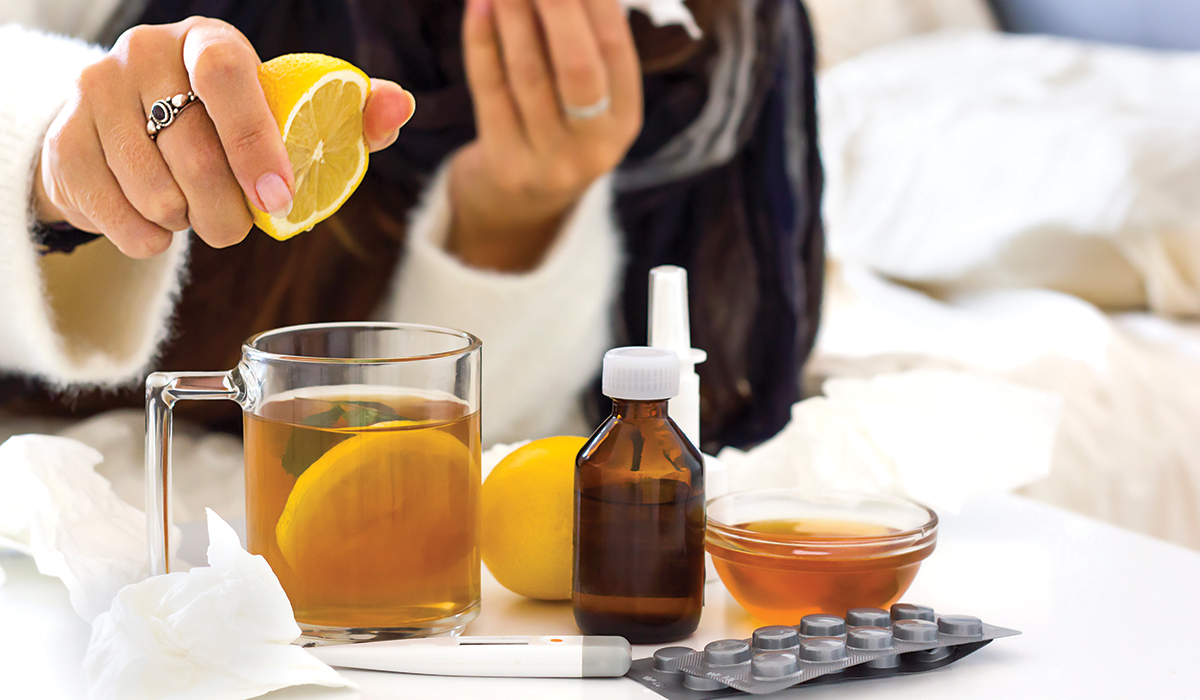October 2025
Colds and flus are among the most common reasons people miss work and school. On average, adults get two to three colds each year, according to the Centers for Disease Control and Prevention (CDC), while children tend to catch even more. In addition, each year, between 3% and 11% of people in the U.S. get sick with the flu.
Fortunately, these common viruses don’t have to sideline you for long. These checklists, compiled from information by the CDC, the National Institutes of Health, and the American Medical Association, can help you better prepare for cold and flu season and stay ahead of illness.
Vaccination checklist
Vaccines are one of the most effective ways to prevent the flu and other respiratory viruses. They can also lessen the severity of symptoms and reduce your risk of hospitalization. Vaccines to prevent respiratory viruses during cold and flu season include:
- Flu vaccine. Everyone six months of age and older should get an annual influenza vaccine, ideally in September or October.
- RSV vaccine. The CDC recommends this vaccine for all adults aged 75 and older, as well as adults aged 50 to 74 with certain risk factors, such as heart disease, lung disease, a weakened immune system, or those living in a nursing home. The best time to receive this vaccine is late summer or early fall, but it can be administered at any time.
Additional prevention checklist
Along with recommended vaccines, you can prevent colds and the flu by following these steps:
- Avoid close contact with people who are sick with any type of upper respiratory infection.
- Don’t touch your eyes, nose, or mouth with unwashed hands.
- Disinfect high-touch areas, such as doorknobs
- Wash your hands with soap and water, especially before cooking or eating, after using the bathroom, and after returning home from being out in public or around others.
- Stay home if you are sick.
- Cover your mouth and nose with a tissue when you cough or sneeze. Use your elbow to cover these instead of your hands.
Staying healthy checklist
Your immune system needs to be at its best to fight off the flu, so taking care of your body is essential:
- Eat a healthy diet. A healthy diet includes plenty of fruits, vegetables, and lean proteins that contain the vitamins, minerals, and other nutrients your body needs to keep your immune system in good shape. If you’re concerned about meeting your daily nutrient requirements, talk to your doctor about taking supplements.
- Get enough sleep. Sleep is especially important for allowing your body to replenish itself and keeping your immune system ready to combat viruses like the flu. In fact, not getting enough sleep is linked to chronic health problems such as high blood pressure, high blood sugar, poor mental health, and heart disease. Adults should aim for at least seven hours of sleep each night, while children require several more hours, depending on their age.
- Don’t smoke and avoid second-hand smoke. Toxins in tobacco smoke weaken the body’s immune system, cause inflammation of the lungs, and impair the function of key immune cells in the lungs. All of this means you’re more likely to catch colds and flus — and more likely to develop complications when you do get respiratory viruses. Avoid second-hand smoke if you can. And if you smoke, the best thing you can do is quit smoking nowz.
Medicine cabinet checklist
If you get a cold or the flu, drink plenty of fluids and get lots of rest. Additionally, having the right supplies on hand can help you manage symptoms more comfortably. Stock up on the following items:
- Acetaminophen or NSAIDs (non-steroidal anti-inflammatories, such as ibuprofen or naproxen sodium) to reduce pain and fever. Children younger than six months should only be given acetaminophen.
- A digital thermometer to check your temperature. You have a fever if the reading is 100.4°F or higher.
- Cough drops or throat lozenges to ease a sore throat and cough. Don’t give these to children younger than four to prevent choking.
- Saline nasal spray or drops for congestion, and a rubber suction bulb for infants and toddlers.
- Vapor rubs to ease congestion in adults and children older than age two.
- A humidifier or cool mist vaporizer to ease nasal and chest congestion.
- Oral zinc in lozenges, tablets, or syrup.
When to see a doctor
If you test positive for the flu, call your doctor right away. They can prescribe antiviral drugs to ease your symptoms, but these medications work best when started within the first two days of symptoms. You should also see a doctor if you have any of the following:
- Dehydration
- Fast or troubled breathing
- A fever that lasts longer than four days
- Symptoms lasting more than 10 days without getting better
- Symptoms that get better but then return or get worse
- Worsening of chronic medical conditions



